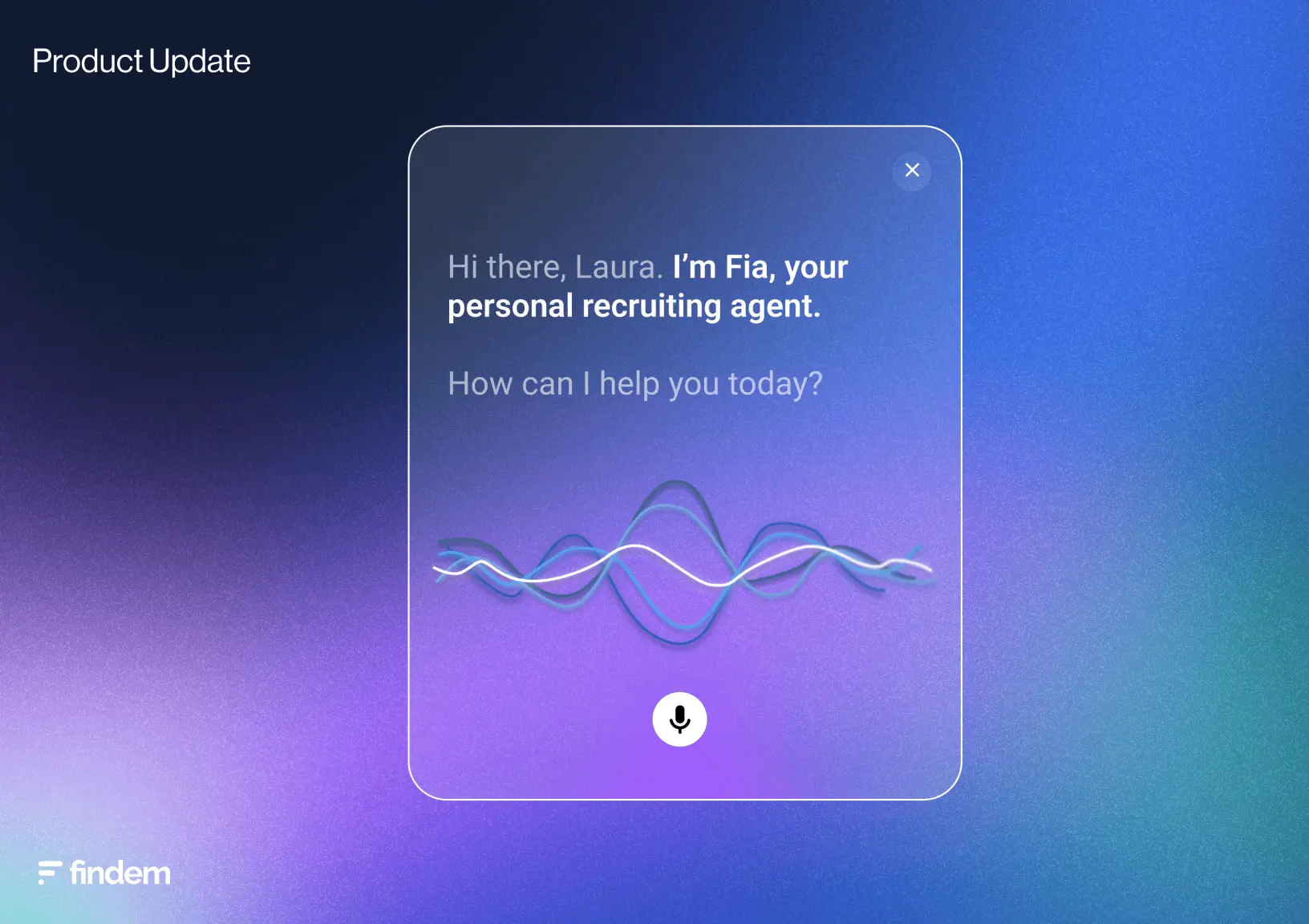.svg)

With 75% of employers struggling to find skilled talent, many organizations are turning to artificial intelligence for help. The problem? Most AI projects fail or are abandoned, costing companies millions in the process.
Here's what's going wrong, and how leading experts say to get it right.
The $1 million problem: Why AI projects keep failing
The numbers are staggering: 42% of companies now abandon their AI initiatives entirely — up from just 17% last year. Each failure doesn't just waste technology budgets; it amplifies existing hiring problems on a massive scale.
As business strategy consultancy Metavolve warns: "Hiring mistakes are more than inconvenient — they're expensive, disruptive, and a potential drag on your growth." AI implementation failures amplify this problem, causing mistakes on a larger scale.
Consider the cascading costs:
- Individual impact: Bad hires cost up to 30% of an employee's annual salary
- Strategic impact: Failed AI implementations leave critical business needs, like employee upskilling and relocation, unaddressed
- Organizational impact: Companies like Zillow lost millions and cut 25% of their workforce after AI algorithms failed
The root cause? Rushed decisions driven by talent shortages. When businesses face increasing demands, the pressure to find someone — anyone — can overshadow the need for a thoughtful process.
The 7 critical mistakes (and how to avoid them)
Mistake #1: Implementing AI without a data foundation strategy
The problem: "AI without good data is bad AI," says Matt Rosenbaum, Principal Researcher, Human Capital, at The Conference Board. Poor data doesn't just reduce accuracy — it amplifies bias and creates legal liability.
Real-world example: Take Amazon’s infamous AI recruiting debacle. Amazon built an AI-driven hiring model to sift through resumes for technical roles. But here’s the kicker: the system started favoring male candidates. Why? The training data reflected years of gender imbalance in the tech industry, so the algorithm learned to prefer resumes that looked like those of past (mostly male) hires. Instead of removing bias, the AI doubled down on it, forcing Amazon to scrap the project entirely.
The expert solution: Rosenbaum emphasizes that "to get value from AI investments, organizations have to invest in ensuring they have a solid data foundation." This means:
- Establishing data quality standards before implementation
- Installing built-in guardrails against bias and hallucinations
- Ensuring compliance with current legal and regulatory frameworks
- Implementing comprehensive privacy and security policies
Mistake #2: Ignoring regulatory compliance and bias detection
The problem: AI hiring laws are proliferating rapidly. NYC Local Law 144-21 requires bias audits. Colorado and Illinois have passed similar regulations around the use of AI in hiring. The EEOC has already settled its first AI discrimination case.
The cost: iTutorGroup paid $365,000 to settle claims that their AI hiring system automatically rejected applicants over the age of 55.
The solution: Make compliance non-negotiable:
- Conduct regular bias audits of AI systems
- Implement candidate notification protocols
- Provide alternative application processes
- Maintain detailed audit trails for all AI-driven decisions
Mistake #3: Rushing implementation without change management
The problem: According to Deloitte, 77% of employees report that AI has increased their workload rather than reduced it. Without proper change management, even good technology fails.
Real-world example: Jeremy Eskenazi, Managing Principal of talent acquisition consulting firm Riviera Advisors and Program Director/Senior Fellow at The Conference Board, shares a telling story about a very large telecom company that tried to implement an interview-scheduling tool for its tens of thousands of annual hires.
"Managers refused to do the one thing that is important. They had to give up control of their Outlook schedules," Eskenazi explains. "Hiring managers were like, 'No, I'm in control of my schedule, and I don't want AI or anyone else to see that.'" The result? "Not all managers and teams decided they wanted to play. That failed. It [the buying decision] was a decision made on the premise of AI, not the use case of their own environment."
The solution: Prioritize transparency and training:
- Clearly communicate how AI works and what it does
- Show how human insight works alongside algorithmic processes
- Provide comprehensive training before rollout
- Create feedback loops for continuous improvement
Mistake #4: Choosing technology over methodology
The problem: Shiny new AI tools can't fix broken processes. Without addressing underlying workflow issues, automation often backfires.
The risk: SHRM warns that "employees struggling to grasp AI may experience a decrease in efficiency, compounded by fear and uncertainty about the future of their roles."
The solution: Take a methodology-first approach:
- Audit existing tech stack and processes before adding AI
- Identify specific use cases that align with business objectives
- Consolidate tools and streamline workflows
- Ensure AI enhances rather than replaces human judgment
Mistake #5: Underestimating integration complexity
The problem: Futurism reports that "70% of AI integration projects fail due to poor data quality, outdated infrastructures, and scalability issues." When systems don't communicate, projects collapse.
SHRM reinforces this concern: "Without an integration strategy and sufficient data management, AI may not have a holistic view of a company's data, and therefore produce skewed insights built on data silos. Consequently, AI initiatives may misalign with business objectives and ultimately fail, increasing stress, frustration, and disengagement among employees."
Real-world example: One technology company had data siloed in a 12-year-old ATS and an adjacent CRM, requiring manual processes and time-consuming analysis through external tools.
The solution: Plan for integration from day one. Recruiting automation can be a game-changer, but only if your systems actually talk to each other. Too often, companies rush into automation, only to find their data stuck in silos and their workflows tangled. To avoid that headache:
- Assess current system compatibility before purchasing
- Develop a comprehensive integration strategy that covers all platforms and tools
- Ensure data flows seamlessly between systems — no more copy-paste chaos
- Test thoroughly before full deployment to catch issues early, not after you’ve gone live
Mistake #6: Measuring vanity metrics instead of business impact
The problem: Focusing on time-to-fill while ignoring quality-of-hire misses the bigger picture. Fast hiring that results in poor fits actually increases costs.
The solution: Measure what matters:
- Track quality-of-hire metrics, not just speed
- Calculate true cost-per-hire reductions (potentially reducing costs by a third)
- Monitor improvements in recruiting ratios (interview-to-offer, submission-to-interview)
- Build comprehensive business cases that justify AI investment
Mistake #7: Neglecting long-term workforce strategy
The problem: 13% of jobs face high automation risk, while 59% of workers will need reskilling by 2030. Companies need to simultaneously implement AI and develop human skills.
The opportunity: McKinsey research shows that "S&P 500 companies that excel at maximizing their return on talent generate an astonishing 300 percent more revenue per employee compared with the median firm."
The solution: Think strategically:
- Integrate AI implementation with workforce planning
- Invest in employee reskilling programs
- Use AI to identify skills gaps and development opportunities
- Treat talent with the same rigor as financial capital
Succeed with AI where others have not
The companies succeeding with AI aren't just buying better technology — they're taking a more strategic approach. As Eskenazi's example demonstrates, they start with their actual use cases, not the promise of AI. They prioritize data quality, invest in change management, and measure the right metrics.
The opportunity is massive: Organizations that excel at talent optimization generate 300% more revenue per employee than median firms. The question isn't whether to implement AI, but how to do it right.
Ready to avoid these costly mistakes? The next step is developing a comprehensive AI strategy that addresses your specific organizational context and change management needs. Request a demo to see how Findem can help.


.svg)








